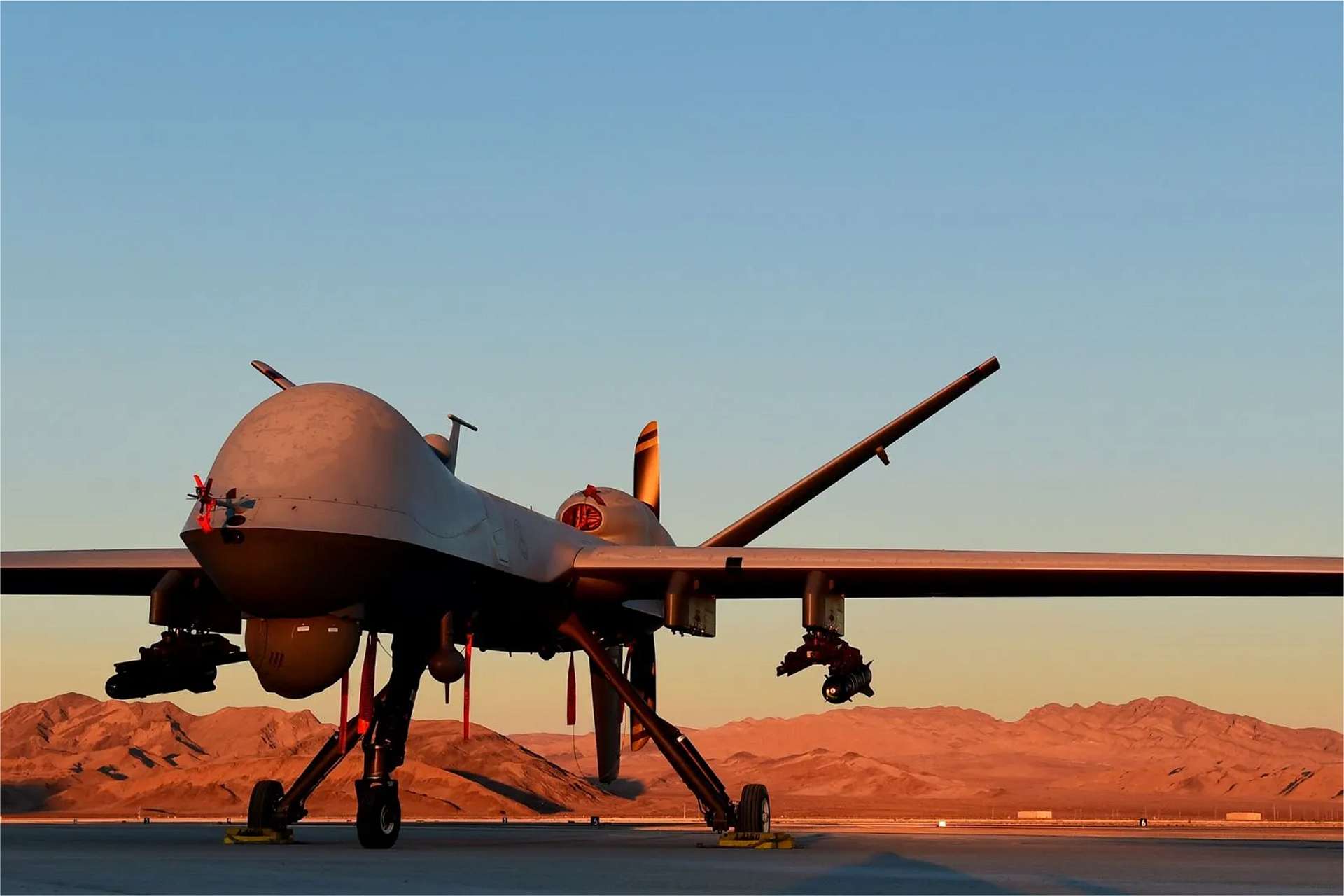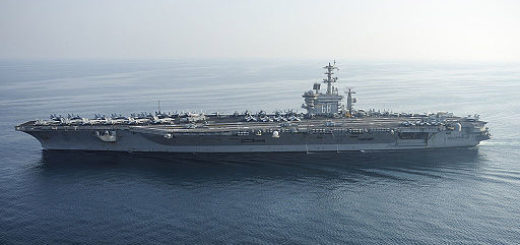United States and India Conclude $3.5 Billion Deal for 31 MQ-9B Drones

{loadposition bannertop}
{loadposition sidebarpub}
India and the United States have finalized a $3.5 billion deal for the acquisition of 31 MQ-9B High Altitude Long Endurance (HALE) drones, aimed at enhancing the operational capabilities of the Indian Navy, Air Force, and Army. According to the agreement, 15 Sea Guardian drones are designated for the Indian Navy, while the remaining Sky Guardian versions will be split between the Air Force and Army, with eight units for each. This strategic investment is part of India’s ongoing modernization of its defense infrastructure, primarily targeting surveillance and reconnaissance needs along sensitive borders with China and Pakistan and in the Indian Ocean region.
Follow Army Recognition on Google News at this link
The MQ-9 Reaper, developed by General Atomics Aeronautical Systems, is a combat drone designed for surveillance, reconnaissance, and target attack missions. (Picture source: US DoD)
This contract, signed under the U.S. Foreign Military Sales (FMS) program, represents a milestone for India’s defense and technological ambitions. In addition, a performance-based logistics (PBL) agreement was signed with General Atomics Global India Pvt Ltd, ensuring local maintenance and operational support through on-ground Maintenance, Repair & Overhaul (MRO) services within India. This approach fosters greater self-reliance in defense maintenance management.
Operationally, these drones will be deployed under a tri-service joint command with bases in northern, northeastern, and southern regions of India. INS Rajali Naval Base near Chennai will serve as the main operational hub for maritime operations, where Sea Guardian drones are already active under a leasing agreement with the U.S. Indian defense officials have also considered integrating indigenous weaponry onto these drones, enhancing their tactical adaptability and interoperability. This agreement comes amid stronger diplomatic and military ties between the two countries, aiming to promote common security goals in the Indo-Pacific region.
The MQ-9 Reaper, developed by General Atomics Aeronautical Systems, is a combat drone designed for surveillance, reconnaissance, and target attack missions. First flown in February 2001, it entered service in 2007, quickly becoming a vital asset for the U.S. Air Force and other military forces worldwide. Unlike piloted aircraft, the MQ-9 is remotely controlled by a two-person ground crew, with one operator responsible for piloting and the other managing the sensor and weapon systems.
In terms of technical specifications, the MQ-9 is powered by a Honeywell TPE-331-10T turboprop engine, allowing it to reach a maximum speed of 480 km/h and operate at an altitude of up to 15,200 meters. With a wingspan of 20 meters and a length of 11 meters, the MQ-9 has impressive payload capacity, enabling it to carry a variety of armaments. It can be equipped with AGM-114 Hellfire missiles for precision strikes, AIM-92 Stinger air-to-air missiles for defense, or GBU-12 Paveway II guided bombs for ground strikes.
Beyond its armament, the Reaper integrates a Synthetic Aperture Radar (SAR) and an electro-optical turret, enhancing its ability to identify and monitor targets over long distances. With a range of 1,850 km, it is well-suited for extended surveillance missions and high-precision strikes in various environments, from deserts and mountains to maritime regions.
This agreement marks a notable advance in India’s strategic drone capabilities, providing substantial potential impact for surveillance and strike operations, while consolidating its position in regional defense alliances.

{loadposition bannertop}
{loadposition sidebarpub}
India and the United States have finalized a $3.5 billion deal for the acquisition of 31 MQ-9B High Altitude Long Endurance (HALE) drones, aimed at enhancing the operational capabilities of the Indian Navy, Air Force, and Army. According to the agreement, 15 Sea Guardian drones are designated for the Indian Navy, while the remaining Sky Guardian versions will be split between the Air Force and Army, with eight units for each. This strategic investment is part of India’s ongoing modernization of its defense infrastructure, primarily targeting surveillance and reconnaissance needs along sensitive borders with China and Pakistan and in the Indian Ocean region.
The MQ-9 Reaper, developed by General Atomics Aeronautical Systems, is a combat drone designed for surveillance, reconnaissance, and target attack missions. (Picture source: US DoD)
This contract, signed under the U.S. Foreign Military Sales (FMS) program, represents a milestone for India’s defense and technological ambitions. In addition, a performance-based logistics (PBL) agreement was signed with General Atomics Global India Pvt Ltd, ensuring local maintenance and operational support through on-ground Maintenance, Repair & Overhaul (MRO) services within India. This approach fosters greater self-reliance in defense maintenance management.
Operationally, these drones will be deployed under a tri-service joint command with bases in northern, northeastern, and southern regions of India. INS Rajali Naval Base near Chennai will serve as the main operational hub for maritime operations, where Sea Guardian drones are already active under a leasing agreement with the U.S. Indian defense officials have also considered integrating indigenous weaponry onto these drones, enhancing their tactical adaptability and interoperability. This agreement comes amid stronger diplomatic and military ties between the two countries, aiming to promote common security goals in the Indo-Pacific region.
The MQ-9 Reaper, developed by General Atomics Aeronautical Systems, is a combat drone designed for surveillance, reconnaissance, and target attack missions. First flown in February 2001, it entered service in 2007, quickly becoming a vital asset for the U.S. Air Force and other military forces worldwide. Unlike piloted aircraft, the MQ-9 is remotely controlled by a two-person ground crew, with one operator responsible for piloting and the other managing the sensor and weapon systems.
In terms of technical specifications, the MQ-9 is powered by a Honeywell TPE-331-10T turboprop engine, allowing it to reach a maximum speed of 480 km/h and operate at an altitude of up to 15,200 meters. With a wingspan of 20 meters and a length of 11 meters, the MQ-9 has impressive payload capacity, enabling it to carry a variety of armaments. It can be equipped with AGM-114 Hellfire missiles for precision strikes, AIM-92 Stinger air-to-air missiles for defense, or GBU-12 Paveway II guided bombs for ground strikes.
Beyond its armament, the Reaper integrates a Synthetic Aperture Radar (SAR) and an electro-optical turret, enhancing its ability to identify and monitor targets over long distances. With a range of 1,850 km, it is well-suited for extended surveillance missions and high-precision strikes in various environments, from deserts and mountains to maritime regions.
This agreement marks a notable advance in India’s strategic drone capabilities, providing substantial potential impact for surveillance and strike operations, while consolidating its position in regional defense alliances.






